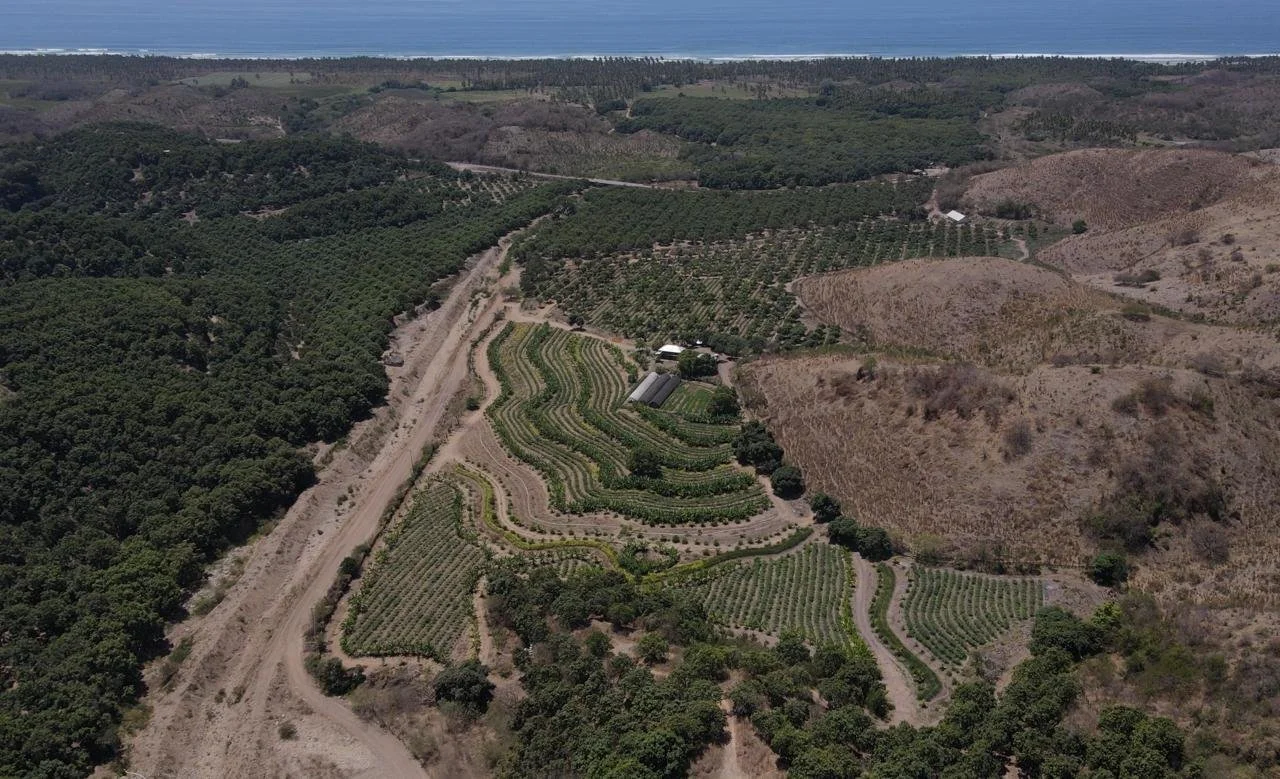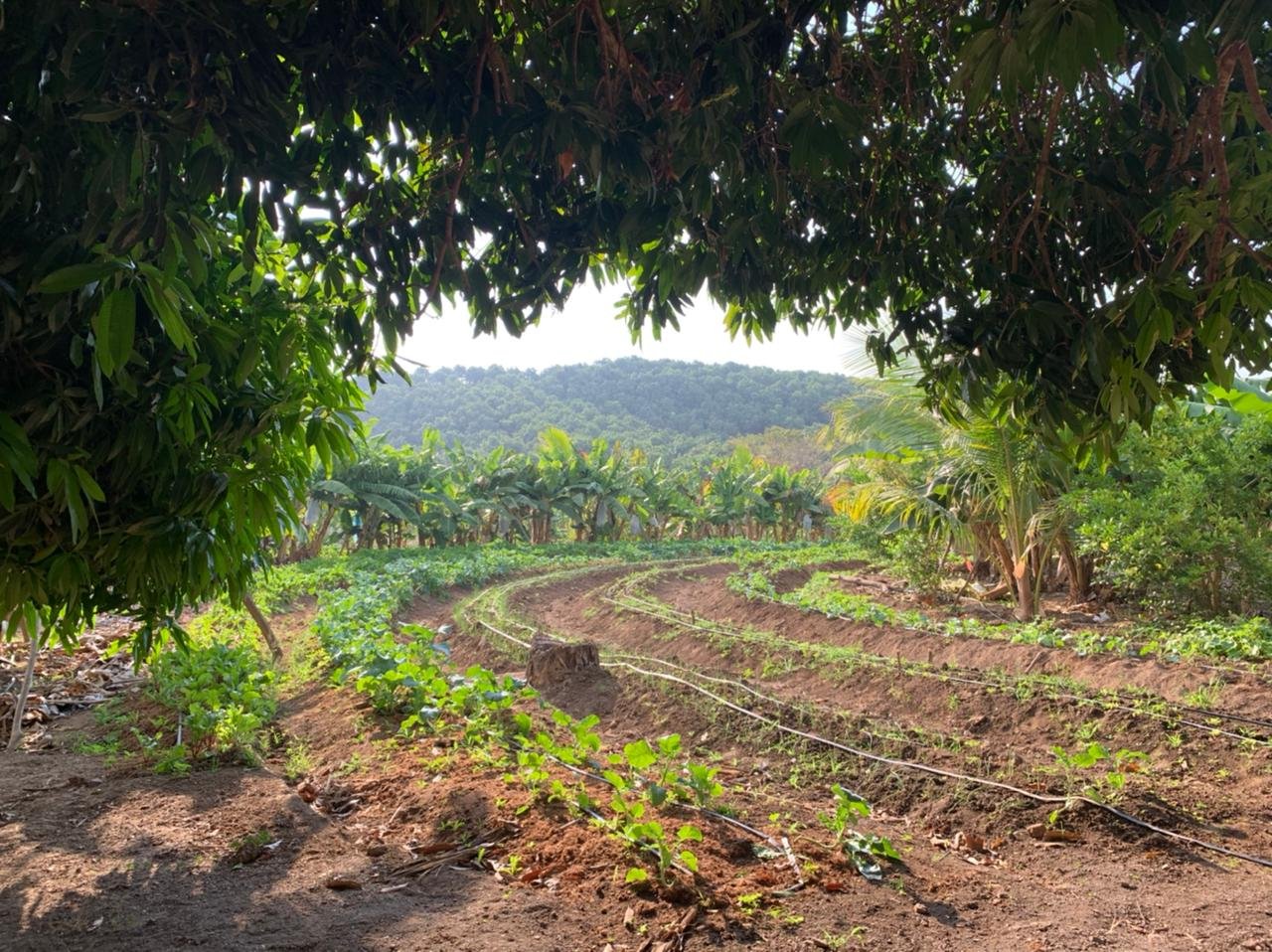Regenerative agriculture Case Study
“Driving up to the farm was like driving up to an oasis in a desert - which it kind of is …
… until the regenerative agriculture practices spread to neighboring farms.”
The Pacific Coast of Mexico, in the states of Guerrero and Michoácan, is known more for mangos, papayas and surfing at well-known sites like Nespa. Our partners at Regenera México are working to make the area just as well known for regenerative agriculture and a circular integration of regenerative processes.
Regenera México’s farm is a few miles north of Nespa, and it truly both a working farm and an R&D facility for testing and improving their circular and regenerative agricultural processes. The roads to the farm on the long drive up from Ixtapa (the closest airport) are lined with farms of mango, papaya and coconut - as well as areas of grasslands. On one of those trips many of the stalks of grass were smoking. Alejandro, the visionary of the Regenera México plan, said that this is a common though misguided practice. The burning of the tall grass releases CO2 into the air, and the ashes do not provide any replenishment to the soil that the natural decomposing of the grass would provide. The Regenera México team has continually invited local farmers to their farm, and worked with them to expose them to the benefits of regenerative agricultural practices. The photo to the left is from one of those farms, a large mango farm in the state of Guerrero, where SensorETA was measuring soil and air quality plus solar radiation.
Regenerative agricultural practices include no tilling, crop rotation, using the debris that falls from the plants and trees, natural fertilizers, cover crops and other processes. These are all aimed to keep the soil healthy, which results in much better carbon sequestration in the soil. It also results in better quality produce, and a higher revenue for the farmer versus single crop farms.
Regenera México goes further than this. Their practices also include mapping out the natural drainage of the land and using that to ensure topsoil doesn’t wash away. Their on-site bio amendments factory has helped them experiment and perfect their fertilizer replacements. And they have employed IoT (Internet of Things) information and automation solutions from SensorETA and Media Sourcery.
The farm also has bees to support biodiversity goals. Whether it was the regAg practices or the power of the place, it was some of the best honey ever!
The farm is in a very remote location. Satellite dishes are the most common method for connecting to the Internet, but even these are few and far between. In this instance, LoRa coverage had to be built, linking hotspots from a house in Nespa with a Starlink satellite to a general store near the entrance to the farm, which had a Hughes satellite dish. The photo below shows Alejandro on the roof of the store adjusting the antenna of one of our Helium LoRaWAN hotspots that was installed in the store to provide coverage.
SensorETA and Regenera México established the first LoRa coverage and the first Helium hotspots in the states of Guerrero and Michoácan. We then deployed soil sensors from Dragino, CO2 sensors from Seeed and air quality and solar radiation sensors from DecentLab.
Our joint goals from these deployments were both tactical and strategic:
Provide information and data to farm personnel and bio-amendment chemists.
Set the infrastructure for automation, particularly around water usage.
Gather data for DMRV (Digital Measurement, Reporting and Verification) for carbon credits.
Gather data to be used in Media Sourcery’s Proof of Authenticity for regenerative organic products and for the bio-amendments.
Support Regenera México’s circular process strategy.
Transfer knowledge locally.
Lay the ground work for local communications infrastructure.
These goals are all aimed toward the local economy. Even laying local communication infrastructure is a huge deal. On one trip to the farm, our SensorETA team noticed that the hotspot that was installed in the local store was not responding. When we got there, we discovered that the store owners had been unable to pay the internet satellite fees - not because of lack of money but because of the lack of gas. Most people in this area use cash only, so when the gas delivery truck was unable to make it to their location, they could not drive the hour to the city of Lázaro Cárdenas to pay the internet fees. By starting with IoT network structure which could grow into 5G and other communications protocols, more services, including critical ones like emergency health services, could be provided.
All of this is a part of the visionary circular strategy of Regenera México. SensorETA is proud to be a part of it.





